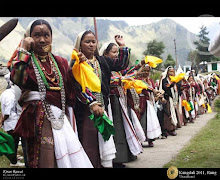About Gangotri Dham
Here are a Few Lesser Lnown Facts About this Dham:
- Gangotri Dham is known for being the starting point for the trek towards the source of Ganga River - Gaumukh. Each year this Dham witnesses a massive turnout of pilgrims and outdoor adventure seekers.
- The current standing temple was constructed 250 years ago by a Nepalese general Amar Singh Thapa who was also known as the ‘lion of Nepal’. The temple had undergone through some destruction and was renovated during the 19th century by the Royal house of Jaipur.
- The idol of the presiding deity of Goddess Ganga is seated on top of a crocodile and is covered in golden face. The temple is also home to other idols of other highly revered Hindu goddesses like Durga, Mahalakshmi, Saraswati, Ganesha and Yamuna.
- The architecture of this temple includes pyramidal towers that are attached to each other in the form of a triangular roof. The bottom of the temple bears some sandstone carvings to give an artistic touch to the temple.
- Mukhba valley is the winter home for the presiding deity of Gangotri Dham which is situated at a distance of almost half n hour close to the pristine Harsil village.
- During the transferring of the idol procession to Mukhba valley each idol is decorated in beautiful jewellery and colorful clothes and seated in palanquin which is followed by a massive procession.
- During the months when the temple is shut down for Darshan and the temple Kapat is closed off then there is an oil lamp which is kept burning throughout this time.
- Situated close to the temple is a Shivling which stays almost submerged in the Bhagirathi River. It is a wide belief that Lord Shiva had drank this water to calm his throat after he had consumed poison.
- It is also widely believed that drinking this water or just taking a holy dip here absorbs all your sins and results in the purification of your sins by Goddess Ganga herself.
About Yamunotri Dham:
Here are a Few Lesser Known Facts about This Dham:
- Although a Hindu temple, the construction for this shrine is built using Tibetan architectural styles which also consists of red and green sandstone carvings.
- The source of the holy river Yamuna originates from Champasar glacier which also marks the beginning of Yamunotri Dham.
- En route from the Chatti to the main Yamunotri ham shrine you will be passing through some of the most scenic and picturesque views of the valleys and other vistas. The entire route is surrounded by Bandarpunch mountain ranges which form a mesmerizing backdrop.
- A Hindu priest performs the daily religious rites that are extremely fluent and well versed in reciting the Vedic Shastras. Most of these priests belong to the villages located nearby like Janki Chatti and Kharsali.
- The temperature of the natural hot water springs that surround the temple complex remains extremely high and is estimated to be as hot as 190 degree Celsius.
- Pilgrims and devotees utilize the naturally occurring hot water springs to make Prasad for the temple. This Prasad is made using fresh rice and potatoes and is boiled in the Kund’s water.
- The presiding deity of this temple is in the form of a black marble idol which represents Goddess Yamuna who is believed to be the daughter the sun god Surya.
- This temple was built during the 18th century by a Gurkha ruler known as Amar Singh Thapa. The temple had underwent a serious destruction caused due to earthquake which was later on reconstructed by Maharani Gularia of Jaipur during the 19th century.
- Located close to this holy shrine is the sacred place where the holy Hindu text of Markandeya Purana was written by the ancient sage Markandeya who is also known for being an avid devotee of Lord Shiva.
- Due to its height, the temple witnesses 6 months of immense snow and chilly winter months. Only the few summer months are utilized as the pilgrimage months for visiting since these are the only months when visitation is possible.
- The legend of this ham involves an ancient sage Asit who used to reside there and his wish was to bathe in both the holy rivers of Ganga as well as Yamuna but due to old age this wish was not possible. But the almighty witnessed his deep devotion and made these rivers appear for him.
- This place is also a rare sighting since both the holy rivers are at the same spot and at the same time making it a unique place to visit India.






If someone based an Internet meme on you, it would have impeccable grammar. Never such an impressive informative blog. Keep up the good work wil look forward for more. Char dham yatra Char dham
ReplyDelete